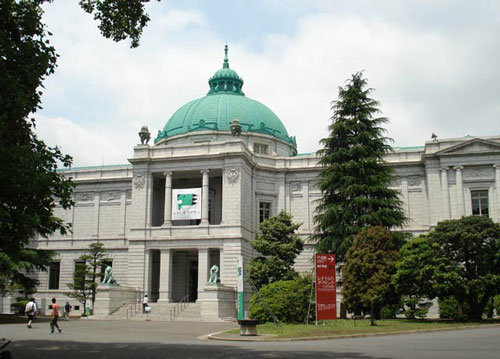
Tokyo National Museum
It’s a bit early to worry about museums and cultural sites when the human costs are so high and the nuclear plants so imperiled. Nevertheless, I’m trying to get some answers.
All that I know so far is that museums in Tokyo—both the Mori Art Museum and the Tokyo National Museum—have closed temporarily to conserve electricity but say that they have not suffered serious damage.
The Tokyo National Museum, which hopes to reopen on Saturday (with reduced hours and only partial access), has announced on its website:
The museum has thoroughly
inspected its exhibition rooms and storages, and fortunately, we have
not suffered any serious damages to artworks, artifacts, and facilities.
The Mori, which has no collection and is only open when it is presenting special exhibitions (two of which were to open on Friday), today sent me this e-mailed message:
Out of the concerns for the power consumption caused by the earthquake and to ensure safety, Mori Art Museum has decided to postpone the scheduled opening of two exhibitions, “French Window: Looking at Contemporary Art through the Marcel Duchamp Prize” and “MAM Project 014: Taguchi Yukihiro” until further notice.
Also in accordance, some of the scheduled exhibition-related programs and events are to be cancelled.
The new dates for the exhibition opening and related programs/events will be announced once determined.The Museum would like to announce that there have been no human injuries, no damages to the facilities and artworks.
New York’s Japan Society, which is continuing its programs as planned (including its Bye Bye Kitty!!! contemporary art exhibition, opening Friday and curated by the Mori’s founding director, David Elliott), has posted on its website some very helpful information about how to send relief donations and how to find and contact people in Japan.
After 9/11, my family had settled on a post-disaster meeting place outside the New York metropolitan area. But now it seems that the best place to reunite is online.
UPDATE: Philippa Polskin, president of Ruder Finn Arts & Communications, who has done PR work for the Miho Museum, tells me:
From what I understand, the Miho was untouched, because it is in Shigaraki, outside of Kyoto. However, many members of the parent organization did live in the affected area and they are still trying to assess what the losses have been among members and friends.
